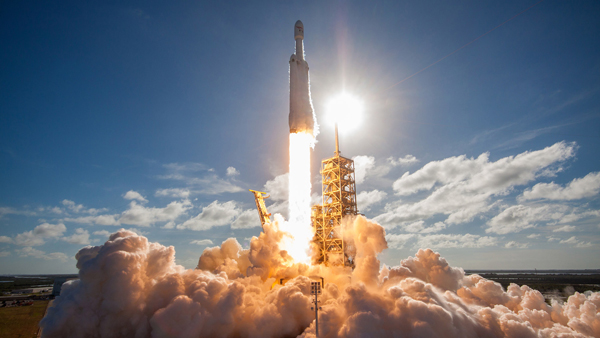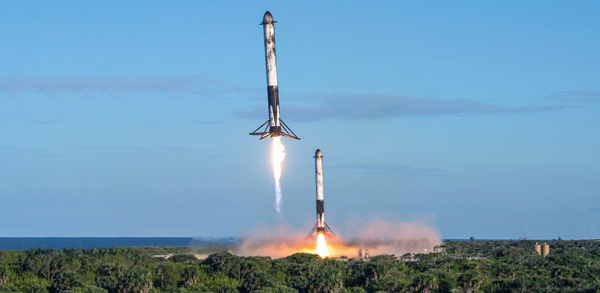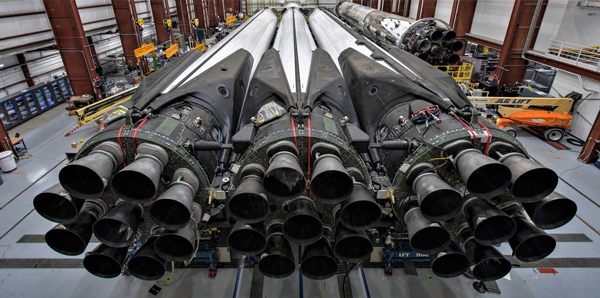Falcon Heavy:
What you need to Know
- The Falcon Heavy is a heavy-lift derivative of SpaceX’s Falcon 9, combining a strengthened central core with two Falcon 9 first stages as the side boosters.
- The Falcon Heavy partially reusable, featuring reusable first-stage boosters, which land either on a ground pad near the launch site or on a drone ship at sea.
- The Falcon Heavy has the highest payload capacity of any currently operational launch vehicle.
- Falcon Heavy was originally designed to be able to carry humans into space beyond low Earth orbit, although as of February 2018, SpaceX no longer intends to transport people on Falcon Heavy.
- SpaceX conducted the first static fire test of flight-design Falcon Heavy centre core at the McGregor Texas facility.
- SpaceX conducted Falcon Heavy’s maiden launch on 6th February 2018, at 20:45 UTC.
- The second Falcon Heavy launch occurred on 11th April 2019, and all three booster rockets successfully returned to Earth. The third Falcon Heavy launch successfully occurred on 25th June 2019
- The Falcon Heavy was developed with private capital with Musk stating that the cost was more than US$500 million.
- The NASA’s Artemis program tasked with returning humans to the Moon, selected the Falcon Heavy to launch the first two elements of the Lunar Gateway, the Power and Propulsion Element (PPE), and the Habitation And Logistics Outpost (HALO), on a single launch in November 2024.
- The Falcon Heavy payload performance to geosynchronous transfer orbit (GTO) has been reduced owing to the addition of the reusable technology, but the rocket now flies at a much lower price.
- Elon Musk stated in 2004 that he hoped the cost of launch per kg would be $1000 this was 35% of the lowest price at the time.
- In May 2012, SpaceX announced that Intelsat had signed the first commercial contract for a Falcon Heavy flight, delivering satellites to geosynchronous transfer orbit (GTO).
- In 2011, NASA Ames Research Center proposed a Mars mission called Red Dragon that would use a Falcon Heavy.
- In December 2012, SpaceX announced its first Falcon Heavy launch contract with the United States Department of Defense.
- In 2014, Inmarsat booked three launches with Falcon Heavy, but owing to delays they switched a payload to Ariane 5 for 2017.
- SpaceX was awarded 40% of the launches in Phase 2 of the National Security Space Launch (NSSL) contracts.
- In March 2020, Falcon Heavy won a contract to a resupply mission to the Gateway, placing a new Dragon XL spacecraft on a translunar injection orbit.
- NASA has chosen Falcon Heavy as the launch vehicle for its Psyche mission to a metallic asteroid with a planned launch in July 2023. The contract is worth US$117 million.
- The next launch of Falcon Heavy is currently planned for 1st November 2022 to launch the classified USSF-44 mission for the US Space Force. Although all three first stag boosters are designed to be re-used, on this occasion only two of the boosters will return to Earth for a safe touchdown. The central core will be ditched, falling into the sea.
- The Falcon Heavy has a total sea-level thrust at lift off of 22.82 MN, from the 27 Merlin 1D engines.
All images © SpaceX



